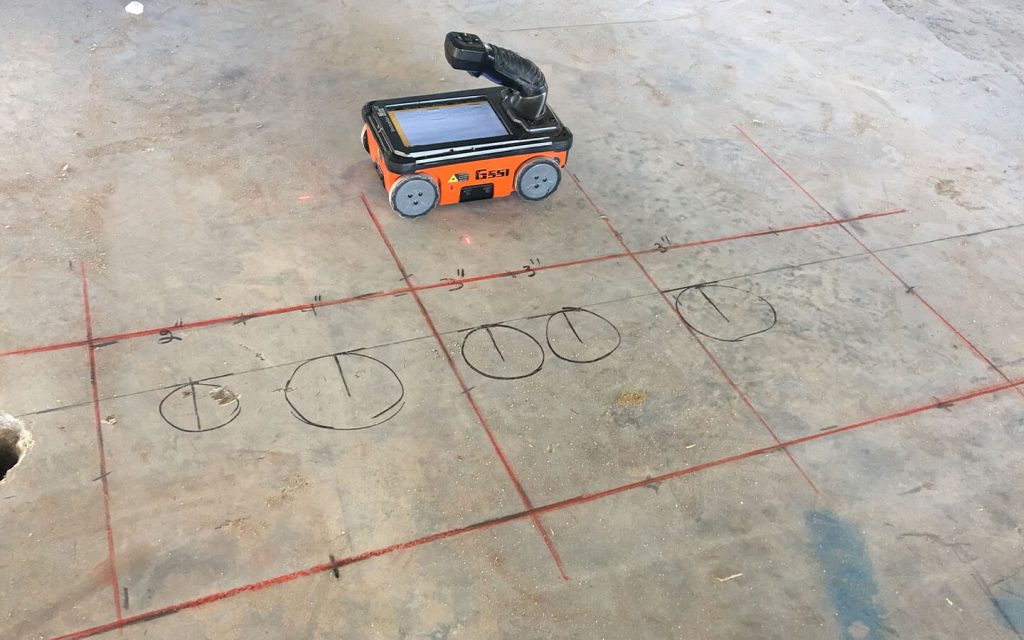Regional RainierGPR Service Areas for Accuracy Concrete Scanning
Regional RainierGPR Service Areas for Accuracy Concrete Scanning
Blog Article
Enhancing Job Planning and Execution Via Advanced Concrete Scanning Techniques
In the world of job planning and implementation, foresight and precision are essential elements that can make the distinction between success and problems. Advanced concrete scanning methods have actually emerged as a sophisticated tool set to raise the criteria of project management within the construction sector. By taking advantage of advanced technology, these strategies supply a glance into the structural integrity of a structure also prior to the initial block is laid. The implications of such developments are extensive, assuring a standard change in exactly how projects are approached and supplied.
Benefits of Advanced Concrete Scanning Methods

Improved Accuracy in Task Evaluations
Enhancing project evaluations via advanced concrete scanning methods substantially enhances the accuracy and dependability of building analyses. By utilizing sophisticated scanning technologies such as ground-penetrating radar (GPR) and 3D imaging, project groups can currently obtain thorough insights right into the condition of concrete structures, determining prospective defects or weaknesses that might not show up to the naked eye. This improved level of precision in project evaluations makes it possible for building experts to make more enlightened decisions pertaining to fixing and maintenance methods, causing improved general project outcomes.
In addition, the increased precision in job analyses accomplished with advanced concrete scanning methods helps in reducing the risk of unanticipated problems throughout the building stage. By proactively spotting concealed abnormalities within concrete structures, such as rebar rust or voids, project teams can deal with these concerns early, preventing pricey delays and rework later on in the task lifecycle. Inevitably, the enhanced precision in project analyses assisted in by sophisticated concrete scanning strategies contributes to better efficiency, cost-effectiveness, and quality in construction tasks.
Early Recognition of Architectural Difficulties
Early detection of architectural difficulties plays an essential function in making certain the honesty and safety and security of concrete structures throughout the construction procedure. Recognizing prospective concerns at an onset allows for prompt intervention, protecting against pricey rework, routine hold-ups, and safety and security threats. Advanced concrete scanning methods, such as ground-penetrating radar (GPR) and 3D imaging, allow job groups to reveal surprise issues, spaces, reinforcement design discrepancies, and other anomalies that can jeopardize the framework's security.
By carrying out these strategies throughout the planning and implementation stages, construction experts can proactively address architectural challenges before they escalate into significant troubles. As an example, spotting insufficient concrete cover over support bars beforehand can protect against corrosion and architectural weakening over time - RainierGPR Service Areas. Additionally, identifying variants in concrete density or thickness can help enhance product usage and make certain consistent strength buildings across the framework
Ultimately, very early identification of architectural challenges via innovative concrete scanning navigate to these guys not only boosts the general high quality and longevity of the building yet also adds to a safer built atmosphere for owners and customers.
Improved Precaution in Construction
The implementation of durable safety methods is crucial in the click here for more info building sector to minimize risks and safeguard the well-being of stakeholders and workers. To enhance safety and security procedures, building and construction firms are progressively embracing technological improvements such as wearable tools that keep an eye on employees' vital indications and identify prospective health and wellness problems in real-time. By focusing on safety with the consolidation of advanced modern technologies and thorough training programs, building tasks can considerably minimize crashes and produce a safe functioning environment for all included.
Streamlining Task Administration Processes
To maximize operational performance and make sure job success in the building sector, a focus on streamlining job management procedures is essential. By implementing reliable project monitoring processes, building jobs can reduce hold-ups, reduce expenses, and boost overall efficiency.

Conclusion
To conclude, the use of innovative concrete scanning strategies uses many benefits for project preparation and implementation. These strategies provide improved precision in job evaluations, early identification of structural challenges, enhanced safety and security actions in building and construction, and streamlined project management processes. Integrating these methods right into job workflows can inevitably cause much more effective and successful outcomes in building and construction jobs.
Eventually, the improved precision in job assessments promoted you can try here by advanced concrete scanning techniques adds to greater performance, cost-effectiveness, and high quality in construction jobs. RainierGPR Service Areas.
To maximize operational performance and make sure task success in the building sector, a focus on enhancing project administration procedures is vital. By executing reliable project administration procedures, building tasks can reduce hold-ups, reduce prices, and enhance general productivity. By enhancing task administration procedures via technology combination, clear interaction, and data-driven approaches, building tasks can achieve higher effectiveness, cost-effectiveness, and effective end results.
These techniques supply better accuracy in project analyses, very early identification of structural challenges, enhanced safety and security measures in building, and streamlined project management processes.
Report this page